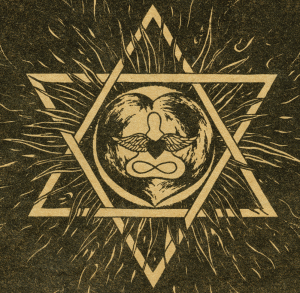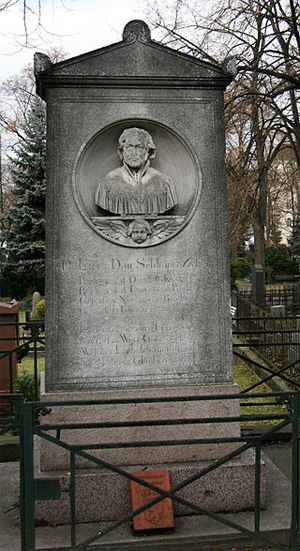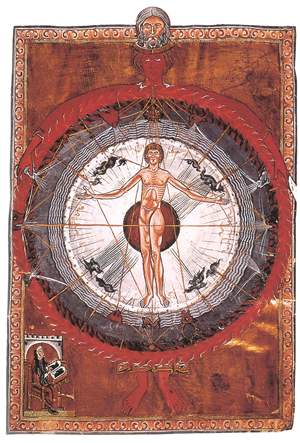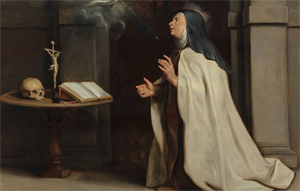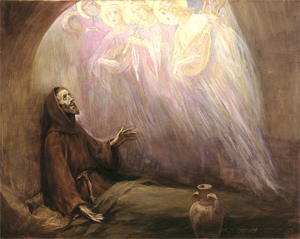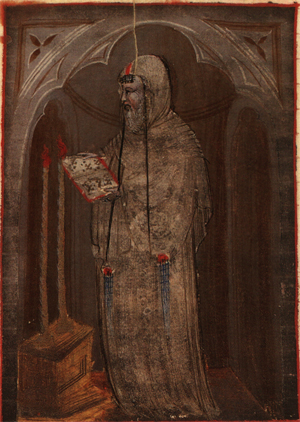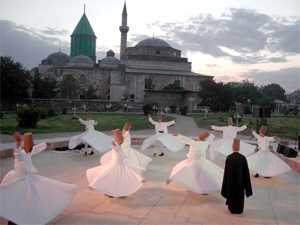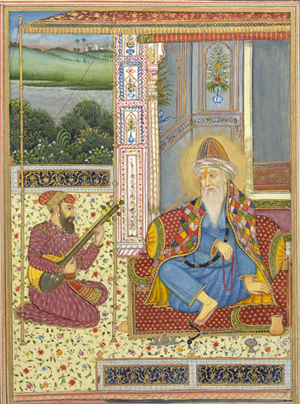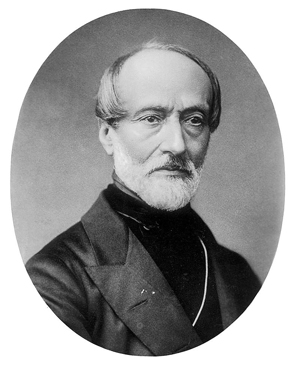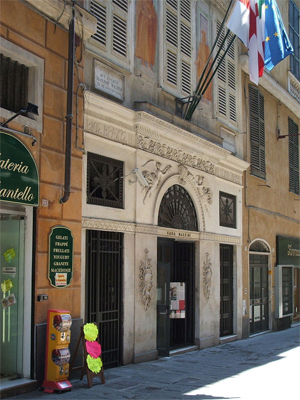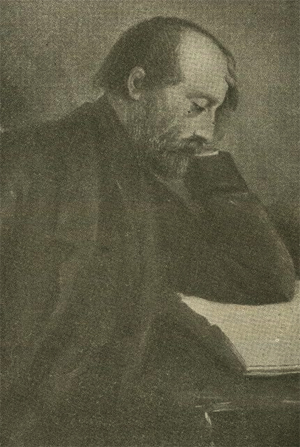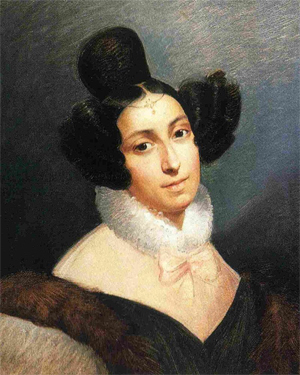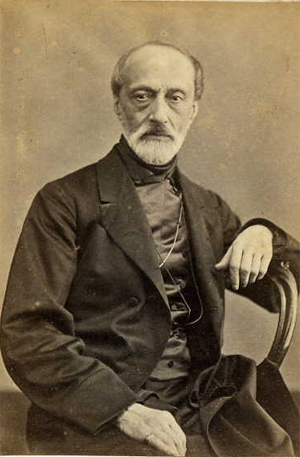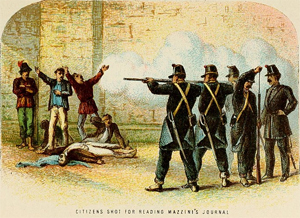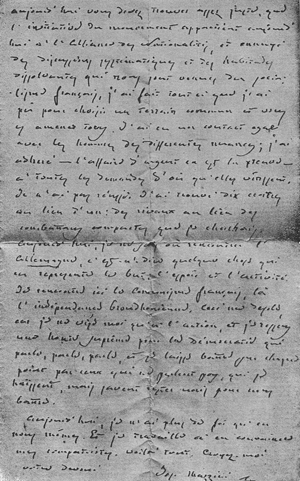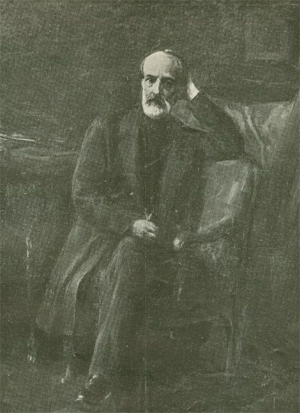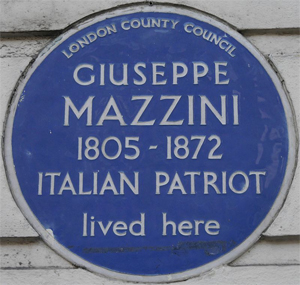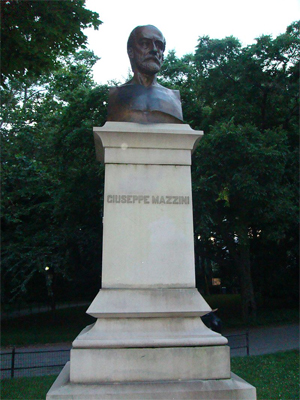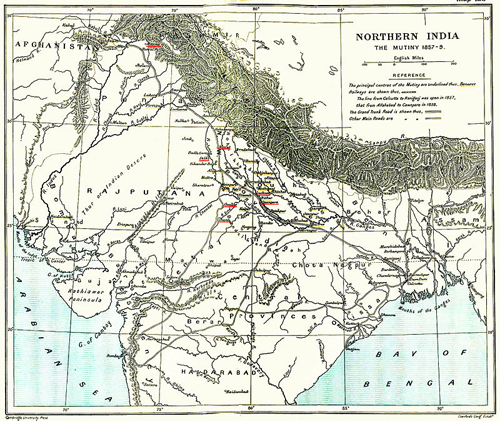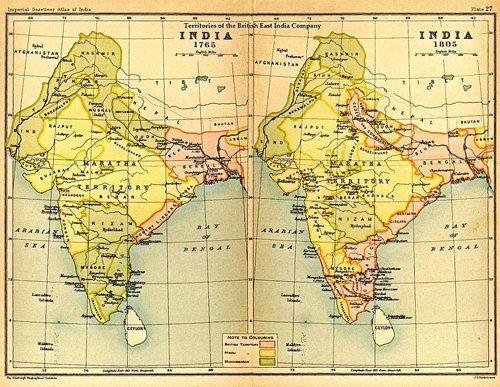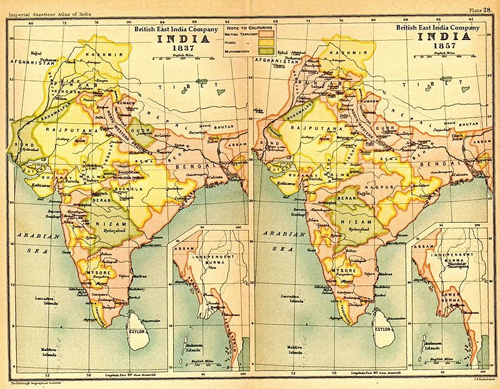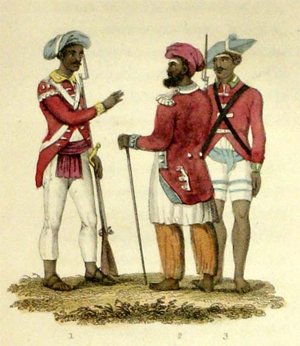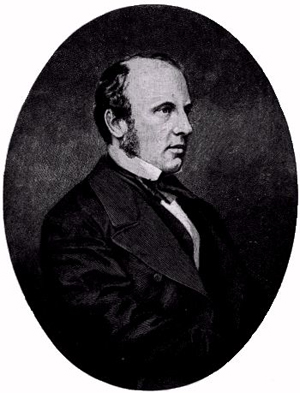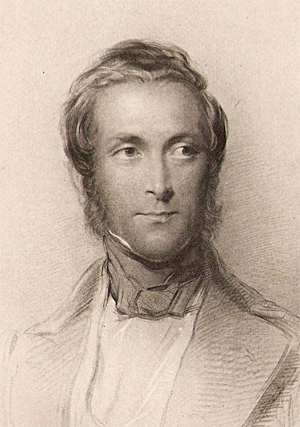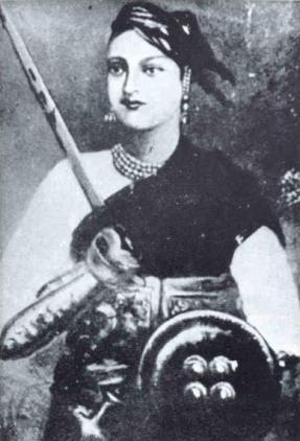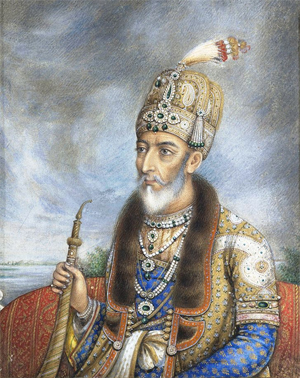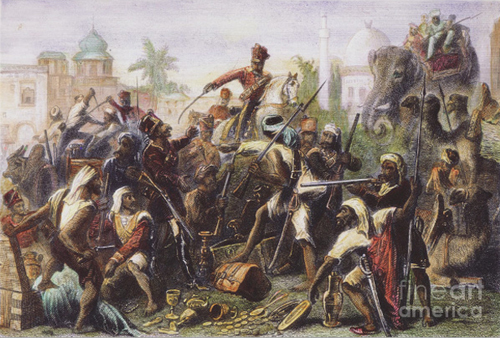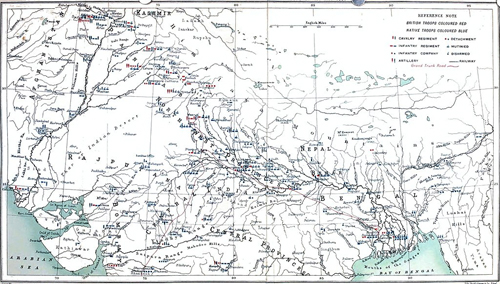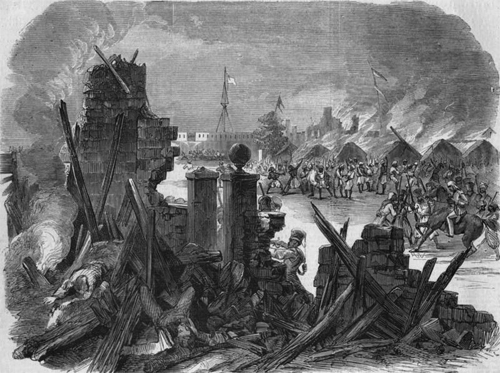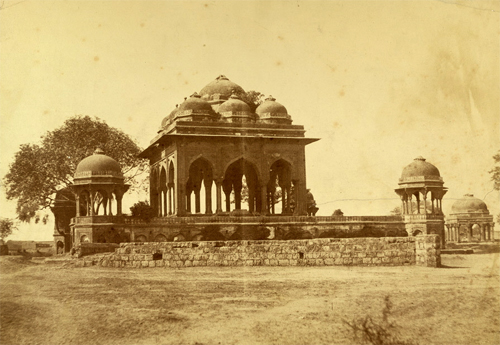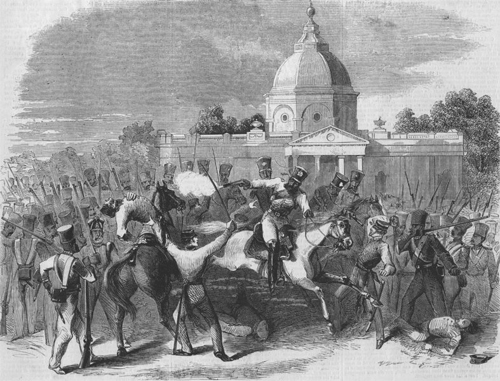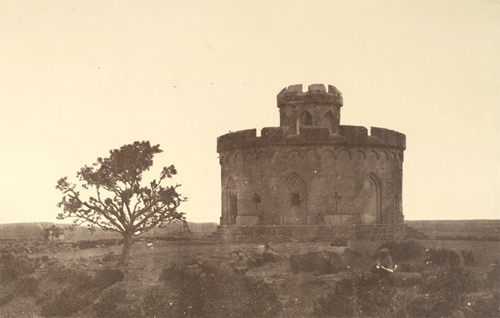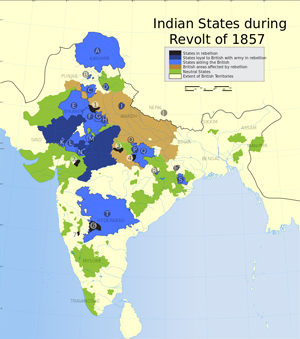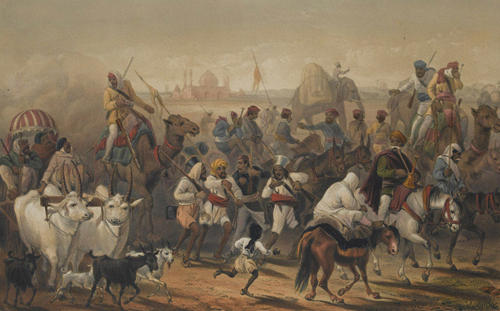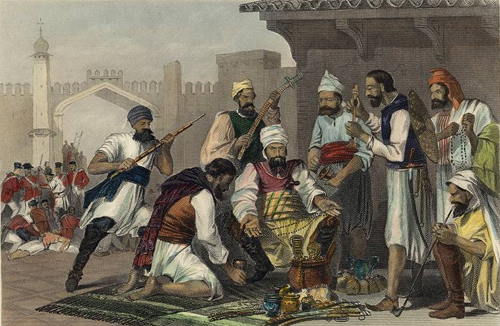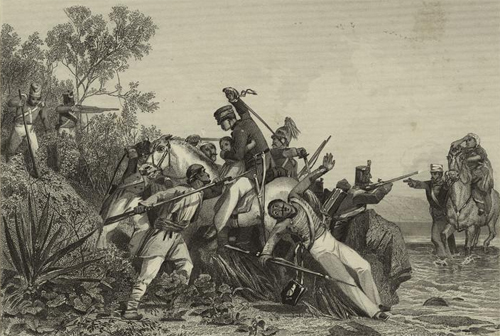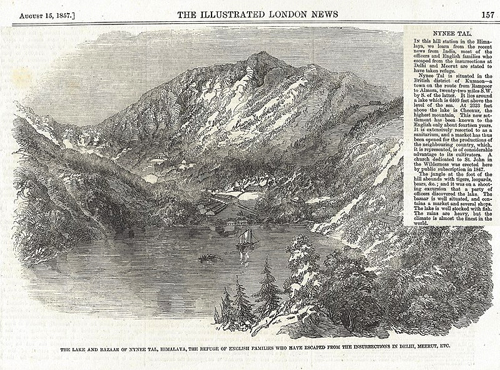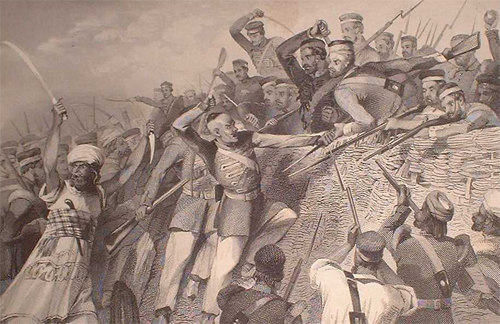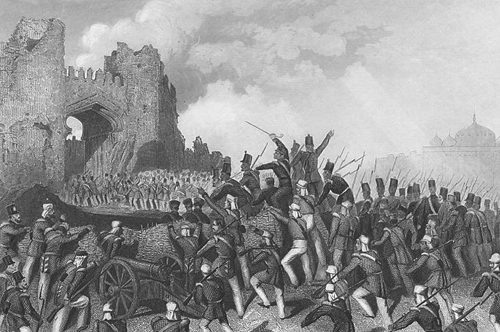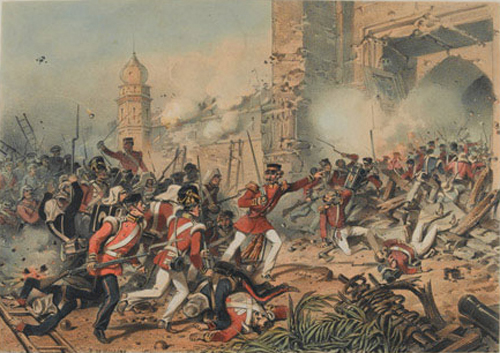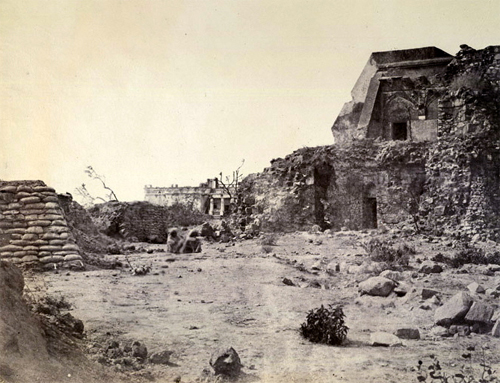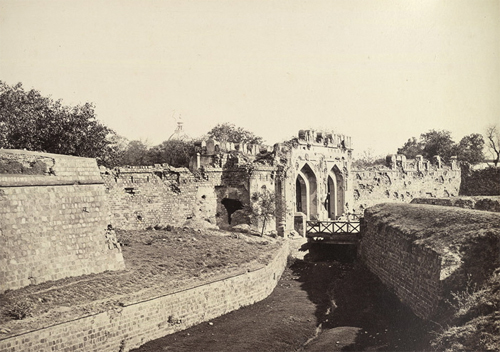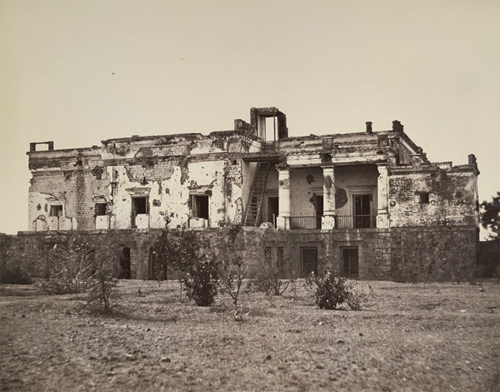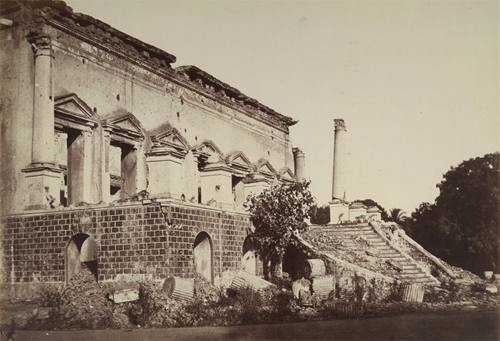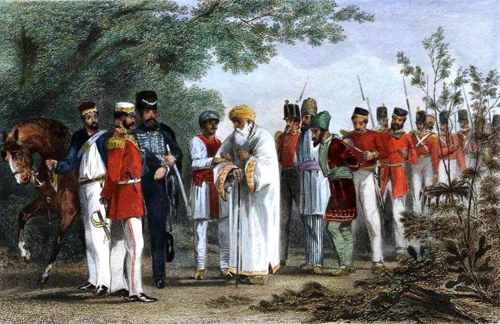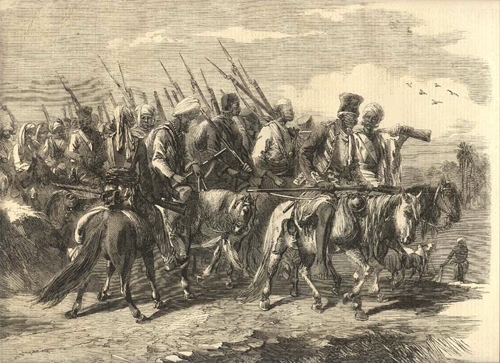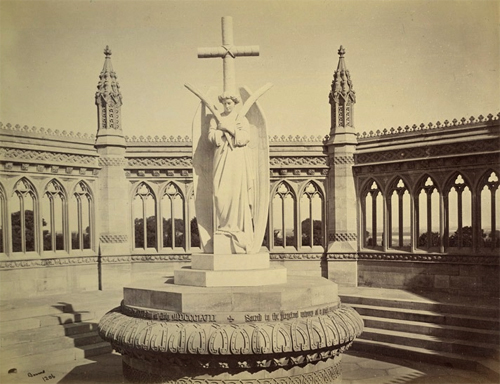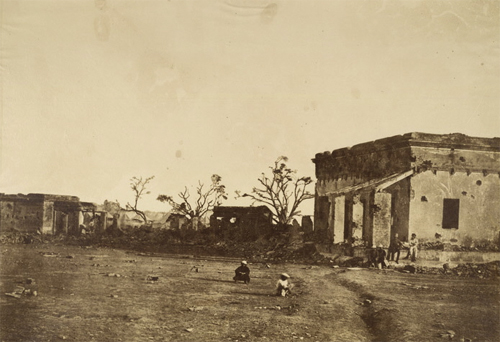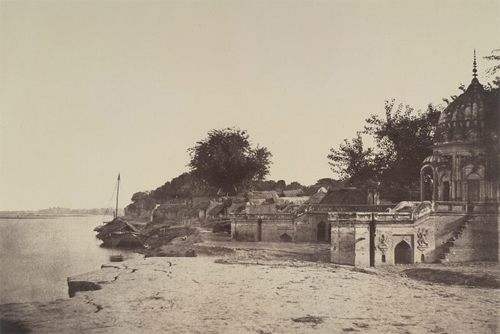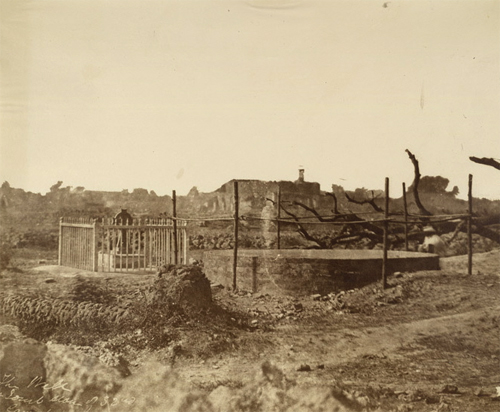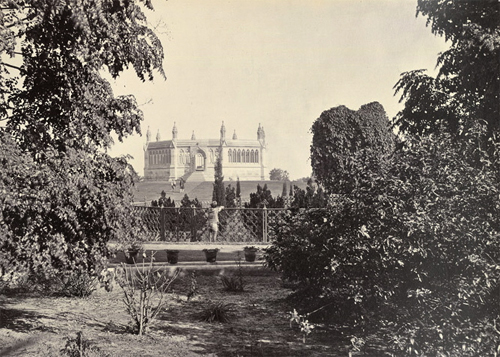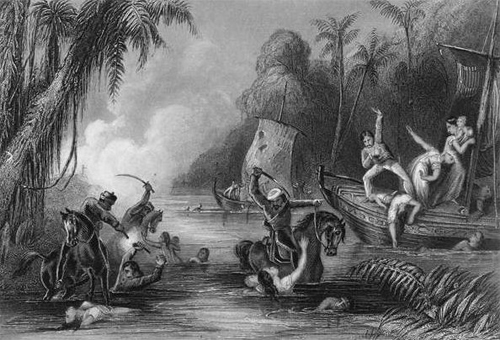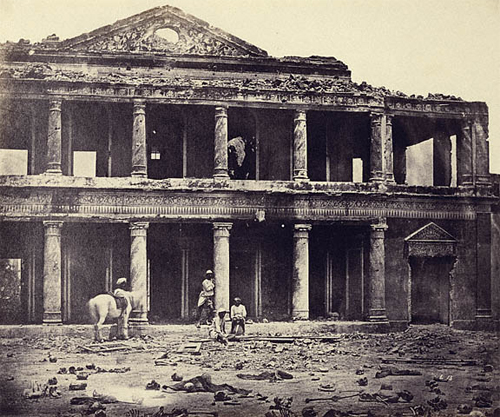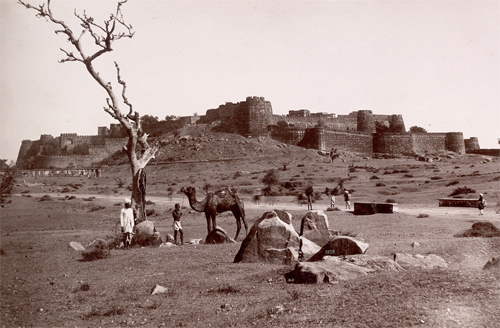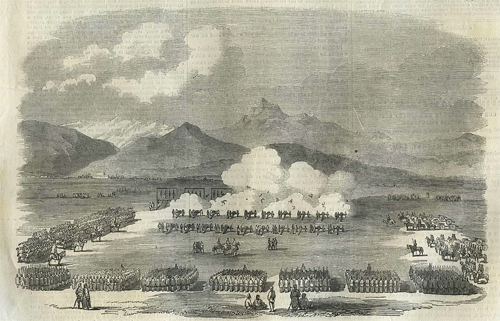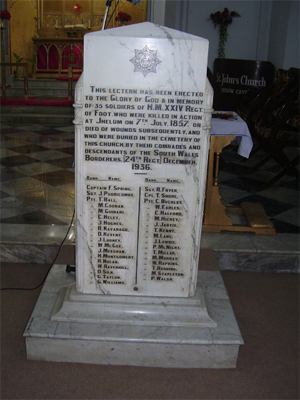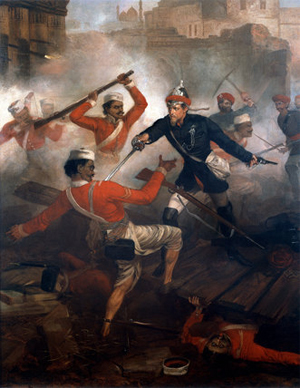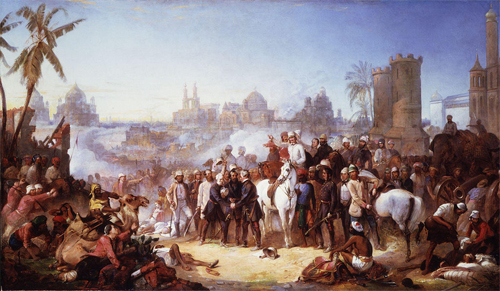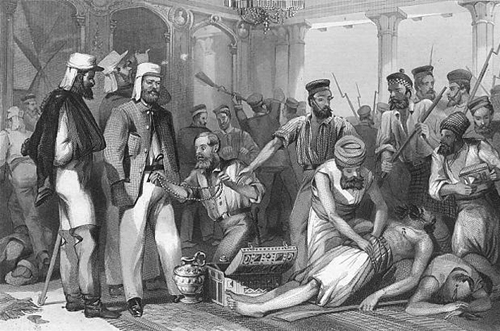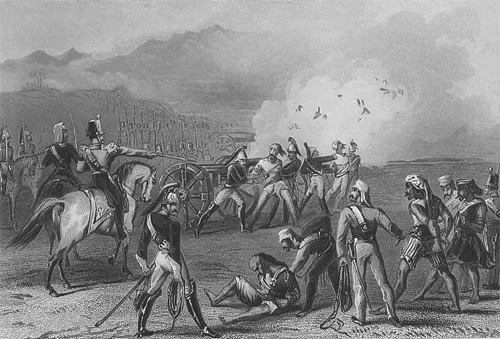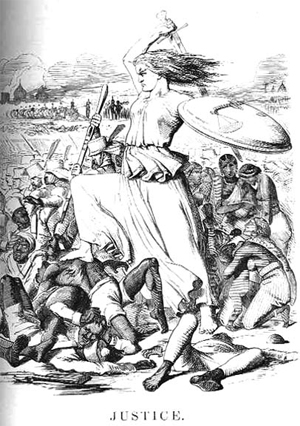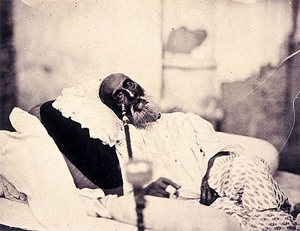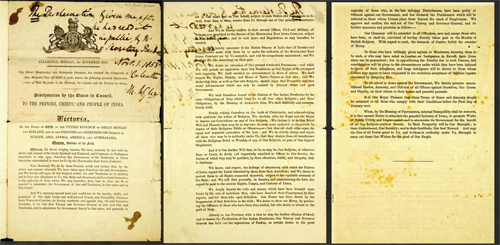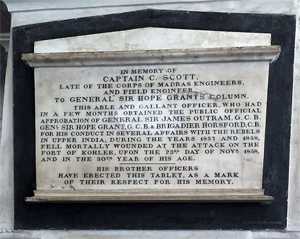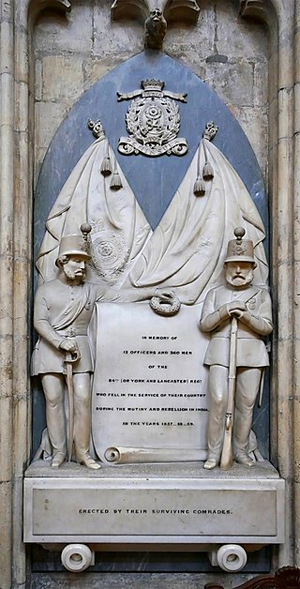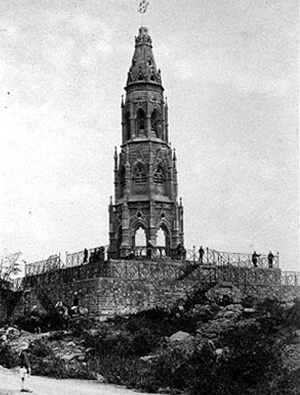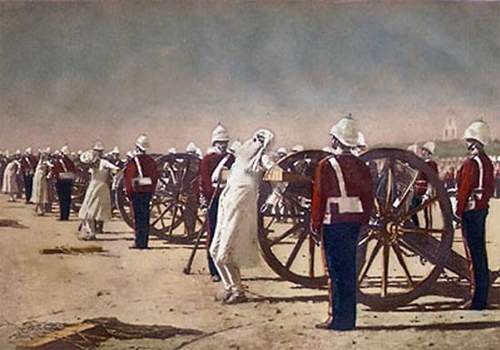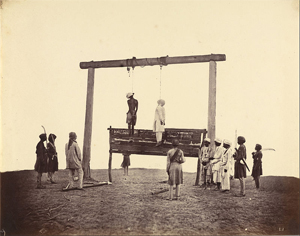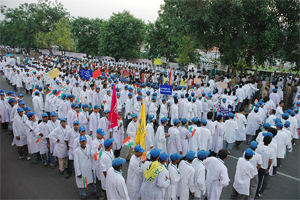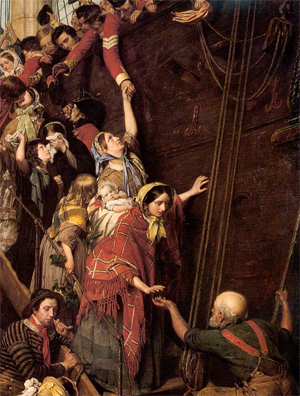Friedrich Schleiermacher
by Wikipedia
Accessed: 5/20/20
Karl Gustav Jung [the grandfather of Carl Gustav Jung] was born in Mannheim in 1794 to a physician, Franz Ignaz Jung, and his wife, Maria Josepha, rumored by later generations to have submitted, like Europa, to a most remarkable infidelity. Little is known about Karl's childhood. The Jungs were Roman Catholics from Mainz and distinguished by their heritage of German physicians and jurists. In a diary Karl kept in his later years, we know that his father had always remained something of a stranger to him and that his mother was inclined toward bouts with depression. (A similar parental constellation is described by Karl's grandson in the early chapters of MDR.) The Jung family cannot be traced prior to its residence in Mainz, for the public archives were burned in 1688 during the French occupation. Franz Ignaz Jung served in a lazaretto during the Napoleonic wars. His brother, Sigismund von Jung, was a high-ranking Bavarian official who was married to the youngest sister of perhaps the most famous religious and nationalist figure in Germany at that time, Friedrich Schleiermacher....
Like his father and grandson, Karl Gustav Jung was a physician. He was trained at Heidelberg, that famous university town, an important center of alchemy and a symbol in Rosicrucian lore. He earned his medical degree in 1816, then moved to Berlin to practice as a surgical assistant to an ophthalmologist. Berlin changed him forever.
Place, landscape, soil -- to understand the imaginal world of Jung it is important to identify these nodal spaces where meaning condenses, the earthen crossroads upon which history rains. Such a place was the home of the Berlin bookseller and publisher Georg Andreas Reimer, an intimate friend of Schleiermacher. Reimer served as the host of the Reading Society, a patriotic club that met in his home. Ernst Moritz Arndt, one of the founding fathers of the nationalist Volkish movement (Volkstumbewegung) in Germany, befriended Schleiermacher here. To avoid prosecution for anti-French activity in the occupied German heartland, Arndt fled to Berlin, the capital of Prussia, and lived in Reimer's home from 1809 to 1810. In 1816 and 1817, so did Karl Gustav Jung.
At Reimer's, Jung found himself in one of the central incubators of German Romanticism and nationalism. He came into contact with a steady flow of ideas from determined men -- some of them political fugitives -- who were convinced of the idea of a Volksgeist, the unique characteristics or genius of the German people as a single nation, determined by language, climate, soil or landscape, certain economic factors, and, of course, race. These ideas found form in the essays of J. G. Herder, Arndt, Jahn, and the sermons of Schleiermacher. Here Jung met the Schlegel brothers -- Friedrich and August Wilhelm -- and Ludwig Tieck, all noted writers and founders of the Romantic movement. Jung underwent a transformation not only of political consciousness, as evidenced by his contributions to the Teutsche Liederbuch anthology of German nationalist poem-songs (Lieder), but of religious consciousness as well. As confirmed in the baptismal certificate signed by Schleiermacher -- another proud possession of the grandson -- Karl Gustav Jung renounced the Roman Catholic faith and became an Evangelical Protestant in the Romantic and nationalist mode.
The aftershocks of the grandfather's renunciation of his ancestral faith can still be felt by those touched by the life and work of the grandson. The sudden conversion of the grandfather, his act of apostasy, his angry rejection of Rome, would arguably prove to be one of the most powerful determinants of the destiny of C. G. Jung. The importance of this familial mark of Cain cannot be overstated.
"Religion of the heart"
Religion mated with German nationalism in the eighteenth century and produced a fever in the people called Pietism. Schleiermacher had been visited by this fever in his youth, and although he forged his own path as a theologian and philosopher, he said his ideas remained closest to this "religion of the heart." To Schleiermacher, the highest form of religion was an "intuition" (Anschauung) of the "Whole," an immediate experience of every particular as part of a whole, of every finite thing as a representation of the infinite. This was the perfect theology for an age of nature-obsessed Romanticism, and at times Schleiermacher's rhetoric, adorned with organic metaphors of the whole derived from nature, shaded into pantheism and mysticism. By 1817, he most certainly infected Karl Jung with it, as he did that entire generation of young patriots through his sermons, his writings, and especially his revisions of the Reformed Protestant liturgy, making it more simple, festive, and Volkish. Additionally, in the decade before he met Jung, he had published translations of Plato and, by his own admission, had become quite influenced by Platonism. This, too, must be remembered when we fantasize about what the older spiritual adviser imparted to the enthusiastic young convert.
German Pietism was loosely related to contemporaneous religious movements, such as Quakerism and enthusiastic Methodism in England and America and Quietism and Jansenism in France. Pietism, however, was to play a key role in developing Volkish self-consciousness and a sense of nation in the politically fragmented German lands. In the spirit of Luther, Pietism was born of disgust with orthodoxies, dogmas, and church hierarchies in the traditional Protestant denominations, making it a form of radical Lutheranism. Pietists dared to question authority and to be suspicious of foreign interpreters of Christianity. They called it a Herzensreligion, a "religion of the heart," a spiritual movement that emphasized feeling, intuition, inwardness, and a personal experience of God. The function of thinking, indeed reason itself, was disparaged and could not be trusted. To experience God, the intellect must be sacrificed. (For example, according to Count Nikolaus Ludwig von Zinzendorf, a prominent eighteenth-century Pietist who influenced Schleiermacher and twentieth-century figures Rudolph Otto and Hermann Hesse, only atheists attempted to comprehend God with their mind; the True sought revelation.)
Pietists' mystical enthusiasm is reflected in some of their favorite incendiary metaphors for their ecstatic experiences. It was the fire of the Holy Spirit that must burn within; indeed, it was often said that "the heart must burn." They emphasized the burning experience of "Christ within us" instead of the inanimate, automatic belief in the dogma of a "Christ for us."
Such subtle distinctions had profound implications for German nationalism, for the belief arose in the feeling of group identity bound by common inner experience, a mystical blood-union of necessity, rather than as some thing external existing for an individual. Hence, the Pietist emphasis on service to others as a method of serving God.
Prussia, the most absolutist of the many German political entities, welcomed the Pietists to Berlin. Attracted to Pietism's rejection of the Lutheran clerical hierarchy -- which threatened the overriding legitimacy of the state -- the eighteenth-century rulers of Prussia adopted Pietism's religious philosophy and offered sanctuary to many of its exiled leaders. As populist movements, Pietism and pan-German nationalism were as threatening to the royal rulers of the dozens of German states as to Lutheran clerics, for they challenged the political status quo. Prussia, however, as the strongest of the German states, already presaged its manifest destiny as the unifier of Germany, and so its short-term goals coincided with those of such movements.
Nicholas Boyle, one of Goethe's biographers, described the immense significance of this convergence of affinities for the next two centuries of German religious life and political history:The particular feature of Pietism which makes it of interest to us is its natural affinity for state absolutism. A religion which concentrates to the point of anxiety, not to say hypochondria, on those inner emotions, whether of dryness or abundance, of despair or of confident love of God, from which the individual may deduce the state of his immortal soul; a religion whose members meet for preference not publicly, but privately in conventicles gathered round a charismatic personality who may well not be an ordained minister; a religion who disregards all earthly (and especially all ecclesiastical) differentiation of rank, and sees its proper role in the visible world in charitable activity as nearly as possible harmonious with the prevailing order ... such a religion was tailor-made for a state system in which all, regardless of rank, were to be equally servants of the one purpose; in which antiquated rights and differentiae were to be abolished; and in which ecclesiastical opposition was particularly unwelcome, whether it came from assertive prelates or from vociferous enthusiasts unable to keep their religious lives to themselves.
By the middle of the eighteenth century, German nationalism had become so intertwined with Pietism that the literature of the time blurs distinctions between inner and outer Fatherlands. The "internalized Kingdom of Heaven" became identical with the spiritual soil of the German ancestors, a Teutonic "Land of the Dead." In these patriotic religious tracts the sacrificial deaths of Teutonic heroes such as Arminius (Hermann the German, who defeated the Romans in the Teutoberg forest) and the mythic Siegfried are compared to the crucifixion of Christ, thus equating pagan and Christian saviors. By the early 1800s, this identity became even more explicit. To Ernst Moritz Arndt, the subjective experience of the "Christ within" was reframed in German Volkish metaphors. In his 1816 pamphlet Zur Befreiung Deutschlands ("On the Liberation of Germany"), Arndt urged Germans, "Enshrine in your hearts the German God and German virtue." They did. By the end of the nineteenth century the German God had reawakened and was moving to reclaim his throne after a thousand-year interregnum.
The primary literature of Pietism consisted of diaries and autobiographies, most driven by the psychological turn inward so valued as the path to reaching the kingdom of God. These confessional texts emphasize the spiritual evolution of the diarist. Each account peaks dramatically with the description of what Schleiermacher called the "secret moment," the tremendous subjective experience that completely changed the life course of an individual and became the central, vivid milestone of his or her faith. This experience was known as the Wiedergeburt, the "rebirth" or "regeneration." Sometimes this experience was preceded or accompanied by visions. Several of the more famous texts, such as the autobiography of Heinrich Jung-Stilling, became part of the canon read by educated nineteenth-century Germans.
Several of these spiritual autobiographies were in the library in C. G. Jung's household when he was growing up, and he cites some of them (such as the work of Jung-Stilling) in MDR and in his seminars. While MDR is highly unlike usual biographies or autobiographies, its story of Jung's spiritual journey is similar in many ways to the Wiedergeburt testimonies of the Pietists. MDR is indeed the story of Jung's rebirth... a remarkable confession of Jung's pagan regeneration.
-- The Aryan Christ: The Secret Life of Carl Jung, by Richard Noll
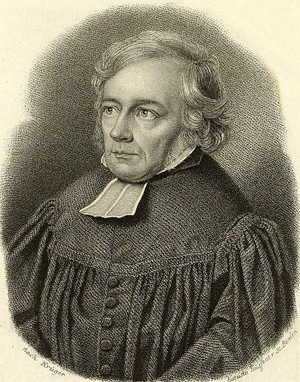
Friedrich Schleiermacher
Born: November 21, 1768, Breslau, Prussian Silesia, Kingdom of Prussia
Died: February 12, 1834 (aged 65), Berlin, Province of Brandenburg, Kingdom of Prussia
Alma mater: University of Halle (1787–90)[1]
Era: 18th-/19th-century philosophy
Region: Western philosophy
School: German Idealism[2]; Jena Romanticism[3]; Berlin Romanticism[4]; Romantic hermeneutics[5]; Methodological hermeneutics[6]
Institutions: University of Halle (1804–07); University of Berlin (1810–34)
Main interests: Theology, psychology, New Testament exegesis, ethics (both philosophic and Christian), dogmatic and practical theology, dialectics (logic and metaphysics), politics
Notable ideas: Hermeneutics as a cyclical process[7]
Influences: Immanuel Kant, K. W. F. Schlegel, J. G. Fichte, F. W. J. Schelling, Johann August Ernesti,[8] Friedrich Ast,[9] Friedrich August Wolf,[9] Johann Gottfried Herder,[10] Baruch Spinoza, Plato
Influenced: Wilhelm Dilthey, Karl Barth, August Böckh, Rudolf Bultmann, Paul Tillich, Albrecht Ritschl, Friedrich Ueberweg, Hans-Georg Gadamer, Manfred Frank, Antoine Berman, Heinrich Ritter, Friedrich Adolf Trendelenburg,[11] L. Harold DeWolf, Walter Rauschenbusch,[12][13] Daphne Hampson

Luther's Rose
Friedrich Daniel Ernst Schleiermacher (German: [ˈfʁiːdʁɪç ˈʃlaɪɐˌmaχɐ]; November 21, 1768 – February 12, 1834) was a German theologian, philosopher, and biblical scholar known for his attempt to reconcile the criticisms of the Enlightenment with traditional Protestant Christianity. He also became influential in the evolution of higher criticism, and his work forms part of the foundation of the modern field of hermeneutics. Because of his profound effect on subsequent Christian thought, he is often called the "Father of Modern Liberal Theology" and is considered an early leader in liberal Christianity. The neo-orthodoxy movement of the twentieth century, typically (though not without challenge) seen to be spearheaded by Karl Barth, was in many ways an attempt to challenge his influence.
Biography
Early life and development
Born in Breslau in the Prussian Silesia as the grandson of Daniel Schleiermacher, a pastor at one time associated with the Zionites,[14]...
The Zionites were a religious sect which flourished in the eighteenth century at Ronsdorf in the Duchy of Berg. The sect sprang from a Philadelphian society founded at Elberfeld in 1726 by Elias Eller and the pastor Daniel Schleiermacher. Eller was the foreman of a factory owned by a rich widow. He read eagerly the writings of ancient and modern visionaries, and then formed an apocalyptic, millenarian system of his own. He made such an impression on the widow, twenty years his senior, that she married him. Thus he obtained the means and influence to draw adherents around himself. The pastor Schleiermacher, grandfather of the celebrated theologian Friedrich Schleiermacher, was also influenced by Eller. The prophetess of the society was the daughter of a baker, Anna van Bushel, who had dreams and visions and saw apparitions. After the death of his wife, Eller married her. She called herself mother of Zion, her husband father of Zion, and prophesied that she would bear the saviour of the world. The new order of things was to begin in 1730. Her first child was a daughter, but Eller was able to console the society with Scriptural texts. A son born in 1733, died two years later. Eller made himself the central point of theology. Christian morality was replaced by the craving for coarse and sensual pleasures. In 1737, the sect left Elberfeld and founded Ronsdorf which soon prospered, and, through Eller's influence, was raised by the State in 1745, to the rank of a city. Eller took the most important offices for himself, lived with his wife in great pomp, and generally governed tyrannically. When Eller's wife died suddenly, in 1744, doubts arose in the mind of Schleiermacher, who was pastor at Ronsdorf. He confessed his mistake, and sought to open the eyes of the deceiving leader, but Eller managed to maintain himself until death. The sect was carried on by the pastors who took Schleiermacher's place, by Eller's stepson Bolckhaus, and continued to exist until 1768. The new pastor chosen in this year, and his successors, brought back the inhabitants of Ronsdorf to Protestantism. The after-effects of the movement could be traced into the nineteenth century.
-- Zionites (Germany), by Wikipedia
The Philadelphians, or the Philadelphian Society, were a 17th century English dissenter group. They were organized around John Pordage (1607–1681), an Anglican priest from Bradfield, Berkshire, who had been ejected from his parish in 1655 because of differing views, but then reinstated in 1660 during the English Restoration. Pordage was attracted to the ideas of Jakob Böhme, a Lutheran theosophist and Christian mystic.
A group of followers came to Pordage, including Ann Bathurst and led by Mrs. Jane Leade (1624–1704), who experienced a number of visions and later published them in her book A Fountain of Gardens. The group incorporated as The Philadelphian Society for the Advancement of Piety and Divine Philosophy in 1694 (their name was inspired by the Philadelphians mentioned in the Book of Revelation.) They rejected the idea of being a church, preferring the term society, and none of the members ceased their memberships in existing churches. Together, the group held views that were somewhat similar to Panentheism, regarding the belief in the presence of God in all things, and with a Nondualist component, in that they also believed the presence of the Holy Spirit exists in each and everyone's soul, and that one can become enlightened and illuminated by living a virtuous life and seeking truth through the wisdom of God.
-- Philadelphians, by Wikipedia
[15] and the son of Gottlieb Schleiermacher, a Reformed Church chaplain in the Prussian army, Schleiermacher started his formal education in a Moravian school at Niesky in Upper Lusatia, and at Barby near Magdeburg. However, pietistic Moravian theology failed to satisfy his increasing doubts, and his father reluctantly gave him permission to enter the University of Halle, which had already abandoned pietism and adopted the rationalist spirit of Christian Wolff and Johann Salomo Semler. As a theology student, Schleiermacher pursued an independent course of reading and neglected the study of the Old Testament and of Oriental languages. However, he attended the lectures of Semler and became acquainted with the techniques of historical criticism of the New Testament, and of Johann Augustus Eberhard from whom he acquired a love of the philosophy of Plato and Aristotle. At the same time, he studied the writings of Immanuel Kant and Friedrich Heinrich Jacobi and began to apply ideas from the Greek philosophers to a reconstruction of Kant's system.
Schleiermacher developed a deep-rooted skepticism as a student and soon rejected orthodox Christianity.[16]
Brian Gerrish, a scholar of the works of Schleiermacher, wrote:
In a letter to his father, Schleiermacher drops the mild hint that his teachers fail to deal with those widespread doubts that trouble so many young people of the present day. His father misses the hint. He has himself read some of the skeptical literature, he says, and can assure Schleiermacher that it is not worth wasting time on. For six whole months there is no further word from his son. Then comes the bombshell. In a moving letter of 21 January 1787, Schleiermacher admits that the doubts alluded to are his own. His father has said that faith is the "regalia of the Godhead," that is, God's royal due.[17]
Schleiermacher confessed: "Faith is the regalia of the Godhead, you say. Alas! dearest father, if you believe that without this faith no one can attain to salvation in the next world, nor to tranquility in this—and such, I know, is your belief—oh! then pray to God to grant it to me, for to me it is now lost. I cannot believe that he who called himself the Son of Man was the true, eternal God; I cannot believe that his death was a vicarious atonement."[17]
Tutoring, chaplaincy and first works
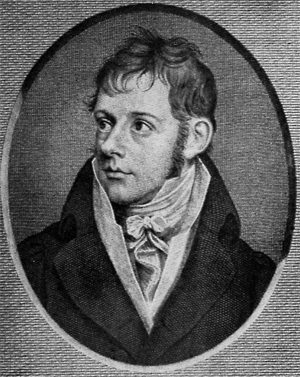
An engraving of Schleiermacher from his early adulthood.
At the completion of his course at Halle, Schleiermacher became the private tutor to the family of Friedrich Alexander Burggraf und Graf zu Dohna-Schlobitten (1741–1810), developing in a cultivated and aristocratic household his deep love of family and social life. Two years later, in 1796, he became chaplain to the Charité Hospital in Berlin. Lacking scope for the development of his preaching skills, he sought mental and spiritual satisfaction in the city's cultivated society and in intensive philosophical studies, beginning to construct the framework of his philosophical and religious system. Here Schleiermacher became acquainted with art, literature, science and general culture. He was strongly influenced by German Romanticism, as represented by his friend Karl Wilhelm Friedrich von Schlegel. That interest is borne out by his Confidential Letters on Schlegel's Lucinde as well as by his seven-year relationship (1798–1805) with Eleonore Christiane Grunow (née Krüger) (1769/1770–1837), the wife of Berlin clergyman August Christian Wilhelm Grunow (1764–1831).
Though his ultimate principles remained unchanged, he placed more emphasis on human emotion and the imagination. Meanwhile, he studied Spinoza and Plato, both of whom were important influences. He became more indebted to Kant though they differed on fundamental points. He sympathised with some of Jacobi's positions, and took some ideas from Fichte...
Johann Gottlieb Fichte (/ˈfɪxtə/;[28] German: [ˈjoːhan ˈɡɔtliːp ˈfɪçtə];[29][30][31] 19 May 1762 – 29 January 1814) was a German philosopher who became a founding figure of the philosophical movement known as German idealism, which developed from the theoretical and ethical writings of Immanuel Kant. ... Fichte was also the originator of thesis–antithesis–synthesis,[9] an idea that is often erroneously attributed to Hegel.[32] Like Descartes and Kant before him, Fichte was motivated by the problem of subjectivity and consciousness. Fichte also wrote works of political philosophy; he has a reputation as one of the fathers of German nationalism....
Between December 1807 and March 1808, Fichte gave a series of lectures concerning the "German nation" and its culture and language, projecting the kind of national education he hoped would raise it from the humiliation of its defeat at the hands of the French...
The aim of the German nation, according to Fichte, was to "found an empire of spirit and reason, and to annihilate completely the crude physical force that rules of the world." Like Herder's German nationalism, Fichte's was wholly cultural, and grounded in the aesthetic, literary, and moral.
The nationalism propounded by Fichte in the Addresses would be appealed to over a century later by the Nazi Party in Germany, which sought in Fichte a forerunner to its own nationalist ideology. Like Nietzsche, the association of Fichte with the Nazi regime came to colour readings of Fichte's German nationalism in the post-war period. This reading of Fichte was often bolstered through reference to an unpublished letter from 1793, Contributions to the Correction of the Public's Judgment concerning the French Revolution, wherein Fichte expressed anti-semitic sentiments, such as arguing against extending civil rights to Jews and calling them a "state within a state" that could "undermine" the German nation.
However, attached to the letter is a footnote in which Fichte provides an impassioned plea for permitting Jews to practice their religion without hindrance. Furthermore, the final act of Fichte's academic career was to resign as rector of the University of Berlin in protest when his colleagues refused to punish the harassment of Jewish students. While recent scholarship has sought to dissociate Fichte's writings on nationalism with his adoption by the Nazi Party, the association continues to blight his legacy, although Fichte, as if to exclude all ground of doubt, clearly and distinctly prohibits, in his reworked version of The Science of Ethics as Based on the Science of Knowledge (see § Final period in Berlin) , genocide and other crimes against humanity:If you say that it is your conscience's command to exterminate peoples for their sins, […] we can confidently tell you that you are wrong; for such things can never be commanded against the free and moral force.
-- Johann Gottlieb Fichte, by Wikipedia
and Schelling. The literary product of that period of rapid development was his influential book, Reden über die Religion (On Religion: Speeches to Its Cultured Despisers), and his "new year's gift" to the new century, the Monologen (Soliloquies).
In the first book, Schleiermacher gave religion an unchanging place among the divine mysteries of human nature, distinguished it from what he regarded as current caricatures of religion and described the perennial forms of its manifestation. That established the programme of his subsequent theological system. In the Monologen, he revealed his ethical manifesto in which he proclaimed his ideas on the freedom and independence of the spirit and on the relationship of the mind to the sensual world, and he sketched his ideal of the future of the individual and of society.
Pastorship
From 1802 to 1804, Schleiermacher served as a pastor in the Pomeranian town of Stolp. He relieved Friedrich Schlegel entirely of his nominal responsibility for the translation of Plato, which they had together undertaken (vols. 1–5, 1804–1810; vol. 6, Repub. 1828). Another work, Grundlinien einer Kritik der bisherigen Sittenlehre [Outlines of a Critique of the Doctrines of Morality to date] (1803), the first of his strictly critical and philosophical productions, occupied him; it is a criticism of all previous moral systems, including those of Kant and Fichte: Plato's and Spinoza's find most favour. It contends that the tests of the soundness of a moral system are the completeness of its view of the laws and ends of human life as a whole and the harmonious arrangement of its subject-matter under one fundamental principle. Although it is almost exclusively critical and negative, the book announces Schleiermacher's later view of moral science, attaching prime importance to a Güterlehre, or doctrine of the ends to be obtained by moral action. The obscurity of the book's style and its negative tone prevented immediate success.
Professorship
In 1804, Schleiermacher moved as university preacher and professor of theology to the University of Halle, where he remained until 1807. He quickly obtained a reputation as professor and preacher and exercised a powerful influence in spite of contradictory charges, which accused him of atheism, Spinozism and pietism. In this period, he began his lectures on hermeneutics (1805–1833) ...
Hermeneutics (/ˌhɜːrməˈnjuːtɪks/)[1] is the theory and methodology of interpretation,[2][3] especially the interpretation of biblical texts, wisdom literature, and philosophical texts.[4][5]
-- Hermeneutics, by Wikipedia
and he also wrote his dialogue the Weihnachtsfeier (Christmas Eve: Dialogue on the Incarnation, 1806), which represents a midway point between his Speeches and his great dogmatic work, Der christliche Glaube (The Christian Faith); the speeches represent phases of his growing appreciation of Christianity as well as the conflicting elements of the theology of the period. After the Battle of Jena, he returned to Berlin (1807), was soon appointed pastor of the Trinity Church and, on May 18, 1809, married Henriette von Willich (née von Mühlenfels) (1788–1840), the widow of his friend Johann Ehrenfried Theodor von Willich (1777–1807).
At the foundation of the University of Berlin (1810), in which he took a prominent part, Schleiermacher obtained a theological chair and soon became secretary to the Prussian Academy of Sciences. He took a prominent part in the reorganization of the Prussian church and became the most powerful advocate of the union of the Lutheran and Reformed divisions of German Protestantism, paving the way for the Prussian Union of Churches (1817). The 24 years of his professional career in Berlin began with his short outline of theological study (Kurze Darstellung des theologischen Studiums, 1811) in which he sought to do for theology what he had done for religion in his Speeches.
While he preached every Sunday, Schleiermacher also gradually took up in his lectures in the university almost every branch of theology and philosophy: New Testament exegesis, introduction to and interpretation of the New Testament, ethics (both philosophic and Christian), dogmatic and practical theology, church history, history of philosophy, psychology, dialectics (logic and metaphysics), politics, pedagogy, translation and aesthetics.
In politics, Schleiermacher supported liberty and progress, and in the period of reaction that followed the overthrow of Napoleon, he was charged by the Prussian government with "demagogic agitation" in conjunction with the patriot Ernst Moritz Arndt.
Ernst Moritz Arndt (26 December 1769 – 29 January 1860) was a German nationalist historian, writer and poet. Early in his life, he fought for the abolition of serfdom, later against Napoleonic dominance over Germany. Arndt had to flee to Sweden for some time due to his anti-French positions. He is one of the main founders of German nationalism and the 19th century movement for German unification. After the Carlsbad Decrees, the forces of the restoration counted him as a demagogue.
Arndt played an important role for the early national and liberal Burschenschaft movement and for the unification movement, and his song "Was ist des Deutschen Vaterland?" acted as an unofficial German national anthem....
Like Fichte and Jahn, Arndt began to envision the German nation as a society of ethnic homogeneity, drawing on the history of the German people, especially in the Middle Ages. His writings lack a specific political program, but instead cite external enemies. While "freedom" is often mentioned, the freedom Arndt envisioned was not that of a pluralistic society, but rather of a romanticized national community. The French are denigrated as weakened, womanish and morally depraved, while supposed German virtues are extolled."The Germans have not been bastardized by foreign peoples, have not become half-breeds, they more than many other peoples have remained in their native state of purity."[3]
These ideas led Arndt to generate anti-French propaganda during the Napoleonic conquest of the German states:"When I say I hate the French carelessness, I despise the French daintiness, I disapprove of the French loquacity and flightiness, I may pronounce a flaw, but it is a flaw that I share with all my people. I could likewise say I hate the English presumption, the English prudery, the English seclusiveness. These hated, despised, dispraised characteristics are not yet vices as such, from the peoples that they represent they may come with great virtues which I and my people are lacking. Therefore ... let us hate our Frenchmen, the infamizers and destroyers of our power and virginity, even more, now that we feel how they weaken and enervate our virtue and strength."[4]
Arndt also was prejudiced against Poles and other Slavs, and published an anti-Polish pamphlet in 1831 in which he castigated Polish "barbarity and wildness". During the liberal Revolution of 1848, when the issue of reviving the Polish state was raised in Frankfurt, Arndt declared that "tribes" of Slavs and Wends "have never done or been able to do anything lasting with respect to state, science, or art," and concluded: "At the outset I assert with world history that pronounces judgment [that] the Poles and the whole Slavonic tribe are inferior to Germans."
He also warned of close contact with Judaism. He warned of the "thousands [of Jews] which by the Russian tyranny will now come upon us even more abounding from Poland" – "the impure flood from the East". Moreover, he warned of a Jewish intellectual conspiracy, claiming that Jews had "usurped" half of literature.
Arndt paired his antisemitism with his anti-French views, calling the French "the Jewish people" ("das Judenvolk"), or "refined bad Jews" ("verfeinerte schlechte Juden"). In 1815 he wrote of the French: "Jews... I call them again, not only for their Jewish lists and their penny-pinching avarice, but even more because of their Jew-like sticking together."
-- Ernst Moritz Arndt, by Wikipedia
At the same time, Schleiermacher prepared his chief theological work, Der christliche Glaube nach den Grundsätzen der evangelischen Kirche (1821–1822; 2nd ed., greatly altered, 1830–1831; 6th ed., 1884; The Christian faith according to the principles of the evangelical church). Its fundamental principle is that the source and the basis of dogmatic theology are the religious feeling, the sense of absolute dependence on God as communicated by Jesus through the church, not the creeds or the letter of Scripture or the rationalistic understanding. The work is therefore simply a description of the facts of religious feeling, or of the inner life of the soul in its relations to God, and the inward facts are looked at in the various stages of their development and presented in their systematic connection. The aim of the work was to reform Protestant theology, to put an end to the unreason and superficiality of both supernaturalism and rationalism, and to deliver religion and theology from dependence on perpetually changing systems of philosophy.
Though the work added to the reputation of its author, it aroused the increased opposition of the theological schools it was intended to overthrow, and at the same time, Schleiermacher's defence of the right of the church to frame its own liturgy in opposition to the arbitrary dictation of the monarch or his ministers brought him fresh troubles. He felt isolated although his church and his lecture-room continued to be crowded.
Schleiermacher continued with his translation of Plato and prepared a new and greatly-altered edition of his Christlicher Glaube, anticipating the latter in two letters to his friend Gottfried Lücke (in the Studien und Kritiken, 1829) in which he defended his theological position generally and his book in particular against opponents on both the right and the left.
The same year, Schleiermacher lost his only son, Nathaniel (1820–1829), a blow that he said "drove the nails into his own coffin", but he continued to defend his theological position against Hengstenberg's party ...
[H]e began to direct his attention to a study of the Bible, which led him to a conviction, not only of the divine character of evangelical religion, but also of the unapproachable adequacy of its expression in the Augsburg Confession. In 1824 he joined the philosophical faculty of the University of Berlin as a privatdozent, and in 1825 he became a licentiate in theology, his theses being remarkable for their evangelical fervour and for their emphatic protest against every form of "rationalism", especially in questions of Old Testament criticism.
-- Ernst Wilhelm Hengstenberg, by Wikipedia
and the rationalists Daniel Georg Konrad von Cölln (1788–1833) and David Schulz (1779–1854), protesting against both subscription to the ancient creeds and the imposition of a new rationalistic formulary.
Death
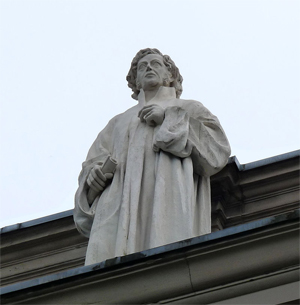
A statue of Schleiermacher at Palais Universitaire in Strasbourg
Schleiermacher died at 65 of pneumonia on February 12, 1834.
Work
Doctrine of knowledge
Schleiermacher's psychology takes as its basis the phenomenal dualism of the ego and the non-ego, and regards the life of man as the interaction of these elements with their interpenetration as its infinite destination. The dualism is therefore not absolute, and, though present in man's own constitution as composed of body and soul, is relative only even there. The ego is itself both body and soul — the conjunction of both constitutes it. Our "organization" or sense nature has its intellectual element, and our "intellect" its organic element, and there is no such thing as "pure mind" or "pure body." The one general function of the ego, thought, becomes in relation to the non-ego either receptive or spontaneous action, and in both forms of action its organic, or sense, and its intellectual energies co-operate; and in relation to man, nature and the universe the ego gradually finds its true individuality by becoming a part of them, "every extension of consciousness being higher life."
The specific functions of the ego, as determined by the relative predominance of sense or intellect, are either functions of the senses (or organism) or functions of the intellect. The former fall into the two classes of feelings (subjective) and perceptions (objective); the latter, according as the receptive or the spontaneous element predominates, into cognition and volition. In cognition, thought is ontologically oriented to the object; and in volition it is the teleological purpose of thought. In the first case we receive (in our fashion) the object of thought into ourselves. In the latter we plant it out into the world. Both cognition and volition are functions of thought as well as forms of moral action.
It is in those two functions that the real life of the ego is manifested, but behind them is self-consciousness permanently present, which is always both subjective and objective — consciousness of ourselves and of the non-ego. This self-consciousness is the third special form or function of thought — which is also called feeling and immediate knowledge. In it we cognize our own inner life as affected by the non-ego. As the non-ego helps or hinders, enlarges or limits, our inner life, we feel pleasure or pain. Aesthetic, moral and religious feelings are respectively produced by the reception into consciousness of large ideas — nature, mankind and the world; those feelings are the sense of being one with these vast objects. Religious feeling therefore is the highest form of thought and of life; in it we are conscious of our unity with the world and God; it is thus the sense of absolute dependence.
Schleiermacher's doctrine of knowledge accepts the fundamental principle of Kant that knowledge is bounded by experience, but it seeks to remove Kant's scepticism as to knowledge of the ding an sich (the noumenon) or Sein, as Schleiermacher's term is. The idea of knowledge or scientific thought as distinguished from the passive form of thought — of aesthetics and religion — is thought which is produced by all thinkers in the same form and which corresponds to being. All knowledge takes the form of the concept (Begriff) or the judgment (Urteil), the former conceiving the variety of being as a definite unity and plurality, and the latter simply connecting the concept with certain individual objects.
In the concept, therefore, the intellectual and in the judgment the organic or sense element predominates. The universal uniformity of the production of judgments presupposes the uniformity of our relations to the outward world, and the uniformity of concepts rests similarly on the likeness of our inward nature. This uniformity is not based on the sameness of either the intellectual or the organic functions alone, but on the correspondence of the forms of thought and sensation with the forms of being. The essential nature of the concept is that it combines the general and the special, and the same combination recurs in being; in being the system of substantial or permanent forms answers to the system of concepts and the relation of cause and effect to the system of judgments, the higher concept answering to "force" and the lower to the phenomena of force, and the judgment to the contingent interaction of things.
The sum of being consists of the two systems of substantial forms and interactional relations, and it reappears in the form of concept and judgment, the concept representing being and the judgment being in action. Knowledge has under both forms the same object, the relative difference of the two being that when the conceptual form predominates we have speculative science and when the form of judgment prevails we have empirical or historical science. Throughout the domain of knowledge the two forms are found in constant mutual relations, another proof of the fundamental unity of thought and being or of the objectivity of knowledge. Plato, Spinoza and Kant had contributed characteristic elements of their thought to this system, and directly or indirectly it was largely indebted to Schelling for fundamental conceptions.
Hermeneutics
Schleiermacher's work has had a profound impact upon the philosophical field of hermeneutics. In fact, Schleiermacher is often referred to as "the father of modern hermeneutics as a general study."[18] While Schleiermacher did not publish extensively on hermeneutics during his lifetime, he lectured widely on the field. His published and unpublished writings on hermeneutics were collected together after his death, albeit with some disagreement over ordering and placement of individual texts and lecture notes. As James O. Duke notes, "it was not until Heinz Kimmerle's edition, based on a careful transcription of the original handwritten manuscripts, that an assured and comprehensive overview of Schleiermacher's theory of hermeneutics became possible."[19] Duke concludes that the Kimmerle edition "reproduces the full, incontestably genuine corpus of Schleiermacher literature on hermeneutics."[20]
Schleiermacher’s desire to approach hermeneutics in a more general sense was an attempt to shift away from more specific methods of interpretation, such as ways of interpreting biblical or classical texts, to a focus on the way in which people understand texts in general. Though he was certainly interested in interpreting Scripture, he thought one could only do so properly once one had established a system of interpretation that was applicable to all texts. This process was not a systematic or strictly philological approach, but what he called "the art of understanding."[21] Schleiermacher understood that reading a text was a discourse between the interpreter and the text itself; however, he considered the text as the means by which the author is communicating thoughts previous to the creation of the text.[22] These thoughts are what ultimately cause the author to produce the text, thus the place where these "inner thoughts" become "outer expression" in language is at the moment of text creation. This is where the meaning of a text ultimately resides for Schleiermacher.
In order to interpret a text, then, the interpreter must consider both the inner thoughts of the author and the language that s/he used in writing the text. This artistic approach to interpreting texts contained within it an ebb-and-flow between what Schleiermacher called the "grammatical interpretation" and the "psychological (or technical) interpretation." The former deals with the language of the text, the latter with the thoughts and aims of the author.[23]
The ultimate goal of hermeneutics for Schleiermacher is "understanding in the highest sense."[24] In this way, the object to be understood stems from a thought of an author, and then is expressed through language. The relationship of the author to language is cyclical, since the author is limited by his/her language and historical context, but s/he also contributes to language as a whole through new ideas and the appropriation of language.[25] The interpreter must understand how its original audience understood this language.[26]
Since the language used by an author "is what mediates sensuously and externally between utterer and listener"[27] the art of understanding becomes just as much the art of avoiding misunderstanding. Schleiermacher divides misunderstanding into two forms: qualitative and quantitative. Qualitative misunderstanding is not understanding the content, or "the confusion of the meaning of a word for another."[28] Quantitative is misunderstanding the nuance in the author’s own "sphere." As a result of these possible misunderstandings, the need for the grammatical side of interpretation is glaring.
The grammatical interpretation leads to the technical interpretation as the reader attempts to understand why the author selected the language s/he did to convey his/her inner thoughts. Part of the task of hermeneutics is to fully understand these thoughts through the author’s discourse, even better than the author him/herself.[29] This can be done by discovering unity within the author, first in knowing why a particular work was produced, secondly in other works produced in a similar genre by others, and finally by other works by the same author in any genre.[30] The interpreter can then evaluate what the effect of the work was on the author’s context. If a reader can understand the psyche of the author, s/he can understand the work, but only in balance with the grammatical side of interpretation, which attempts to understand the work to understand the inner thoughts of the author. "Understanding" for Schleiermacher is the art of experiencing the same process of thought that the author experienced. Understanding is made possible by the fact that author and reader, since both are human, share the reasoning ability. Therefore, the process of understanding is not only a historical process, learning about the context in which the author wrote, but also a psychological process, drawing upon the connection between interpreter and the author. Thus, hermeneutics is a cyclical task, but for Schleiermacher it is not viciously circular because of the role of intuition.[31] As humans, therefore, interpreters approach a text with some shared understanding with the author that creates the possibility of understanding.
Despite Schleiermacher’s claim to the potential understanding of the author’s thoughts better than the author, he grants that "good interpretation can only be approximated" and that hermeneutics is not a "perfect art."[32] The art puts the interpreter in the best position by "putting oneself in possession of all the conditions of understanding."[33] However, the extent of an interpreter’s understanding of a text is mostly limited by his or her own potential to misunderstand a text.
The impact of Schleiermacher's work on hermeneutics is significant. The claim of Schleiermacher as the father of hermeneutics seems to be justified by the fact that his work marks the beginning of hermeneutics as a general field of inquiry, separate from the specific disciplines (e.g. law or theology).[34] His focus on hermeneutics as a theory of interpretation for any textual expression would be expanded even further to the theory of interpretation of lived experiences in the twentieth century by those like Heidegger, Gadamer, and Ricoeur.

